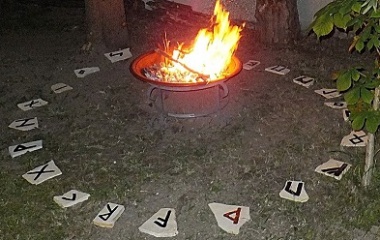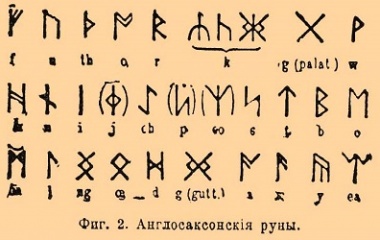Life’s mysteries cannot be solved by one universal esoterica, from ancient or modern sources. The Old Norse left behind a sacred text that is still in use by pagans today. It provides a glimpse into their shamanic magic and mystery for all seekers of knowledge and wisdom.
What Are Runes?
Nordic runes were the first form of writing used by the early Germanic tribes. The word rune means secret, as well as letter, in Proto-Germanic. Nordic runes were usually carved into wood or stone, thus accounting for their angular style. In Nordic mythology, the runes represented more than just a letter, but rather a concept or representation of something in the cosmos too. Authors allege that when writing the Nordic runes, you would also be invoking the power they represented!
The Futharks
These ancient symbolic letters can be found in futharks: the runic alphabets. The name futhark represents the first symbols listed in the runic alphabet. Authors report the existence of three main futharks: the Elder Futhark, the Younger Futhark and, lastly, the Anglo-Saxon Futhorc. The Elder Futhark was developed in the 1st century BC, according to sources, and consisted of 24 characters. The Younger Futhark originated in approximately 750 BC, the time of the Vikings. It consisted of 16 characters, instead of the earlier 24. Scholars purport the reduction in characters may have been due to the phonetic changes from Proto-Norse to Old Norse. The Anglo-Saxon variant had 33 characters and was believed to be in use from the 5th century.
Origin of the Runes
Though authors on the subject vary in opinion, it is generally agreed that Nordic runes originated from one of the Old Italic alphabets in the 1st century BC. The earliest runic inscriptions date back to 160 BC, in the form of a Vimose comb and spearhead, from Denmark and Norway respectively. A Swedish artifact called the Kylver Stone has the complete Elder Futhark engraved on it and dates back to 400 BC.
The Old Italic alphabet was likely picked up by northern Europeans through the movements of war at the time. This is perhaps supported by the frequent association of Odin, the god of war, with the runes. According to Norse mythology, however, the Nordic runes were not adapted from earlier alphabets, but were rather a magical discovery by their god, Odin. The forces represented by the runes have always existed and allegedly stem from the Well of Urd, beneath the Yggdrasil, according to an Old Norse poem, Hávamál. In a similar Norse poem, three female spirits, the Norns, are mentioned in relation to the magical runes. The Norns purportedly carve into the tree, suggesting the carving of runes. In Nordic mythology, when Odin hung himself in Yggdrasil, he learned the secrets of the Nordic runes and was then able to pass them on to others.
The Poetic Edda suggests another path the Nordic runes may have followed to reach man, in the poem: Rígsþula. The poem recounts the story of a man who had three sons. One of his sons, called Jarl, meaning noble, eventually learned to handle weapons and show signs of being well-born, just as his name implied. His father noticed the changes and decided the time had come to pass on his knowledge of Nordic runes to his son.
Runes in Magic
The belief in the power of magic was deep-rooted in ancient religions and mythology, including in the early Germanic peoples. Magic was linked directly to knowledge of the cosmos and was part of their daily life. They used it to alter their destiny, according to some sources. Nordic runes were often carved on amulets for wearers to benefit from their magical power, and formed part of runic songs too. The magical symbols were used in curses, evidenced by artifacts such as the Björketorp Runestone, from the 6th century, which utilized the word rune in its engraved jinx. Similarly, on the Stentoften Runestone, the same use of the word is recorded. Rhyming words, charm words, such as auja, and words repeated three times, were often noted in inscriptions on artifacts at the time, strongly suggesting a link to magic.
The magical power of the Nordic runes, some authors claim, is represented even by the smallest unit of sound, called a phoneme. Certain schools of thought believe the sound and the meaning of a letter or word are closely linked. This aligns with the mythological worldview where reality is created by words, rather than the converse view, which is more widely accepted in monotheistic religions. The relationship of the rune with its symbol is equally important in this context, some authors claim, as it relays communication between humans and the forces invisible to the human eye.
Examples of Runes
- Rune name: Thurisaz. The word means giant and the rune explanation is suffering and danger.
- Rune name: Ansuz. The word means an Aesir god and the rune explanation is vitality and prosperity.
- Rune name: Sowilo. The word means sun and the rune explanation is solace and success.
- Rune name: Berkanan. The word means birch and the rune explanation is sustenance, growth and fertility.
Modern Use in Neopaganism
Writer and occultist Guido von List authored the book The Secret of the Runes in 1908. The book contains 18 runes, allegedly based on the Younger Futhark, and called Armanen runes. He claimed to have received the knowledge of the mythical symbols when he was temporarily blinded for 11 months. Von List believed firmly in the power of the runes and established an esoteric society, linked to ancient Germanic religion, called the High Armanic Order.
Nordic mythologists suggest the sacrifice of Odin’s eye, when he hung himself from the World Tree, symbolized a change from normal sight to prophetic sight or intuition. For modern day wisdom seekers, the Nordic runes, their myths and mystery, offer a glimpse into an ancient world where magic and its elemental power was part of everyday life. The cryptic whispered secrets still bring wisdom to pagans today, purportedly connecting the outer and inner world, and introducing the power of the cosmos into their personal reality.










